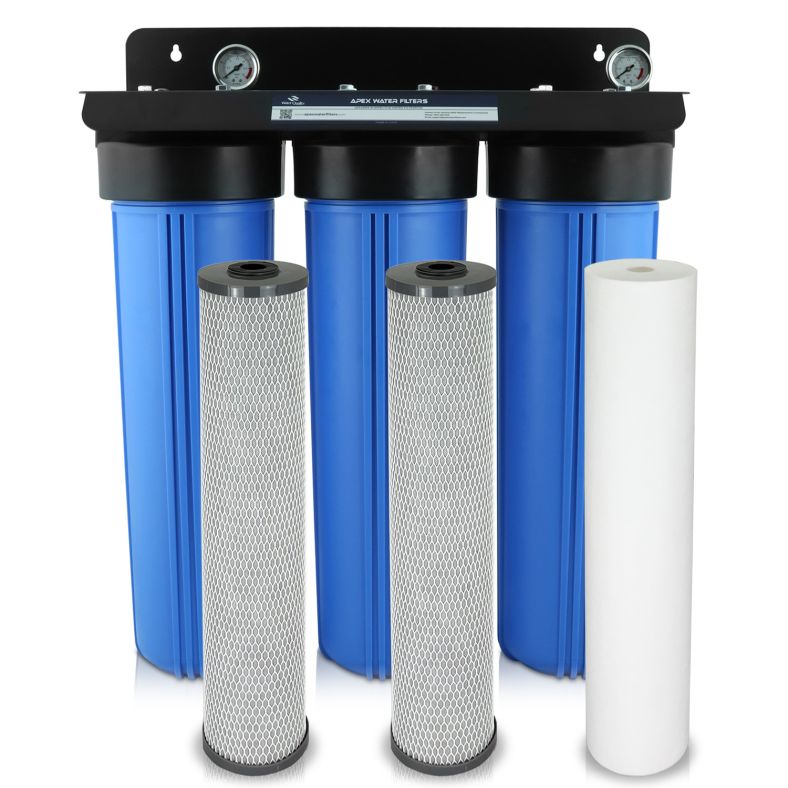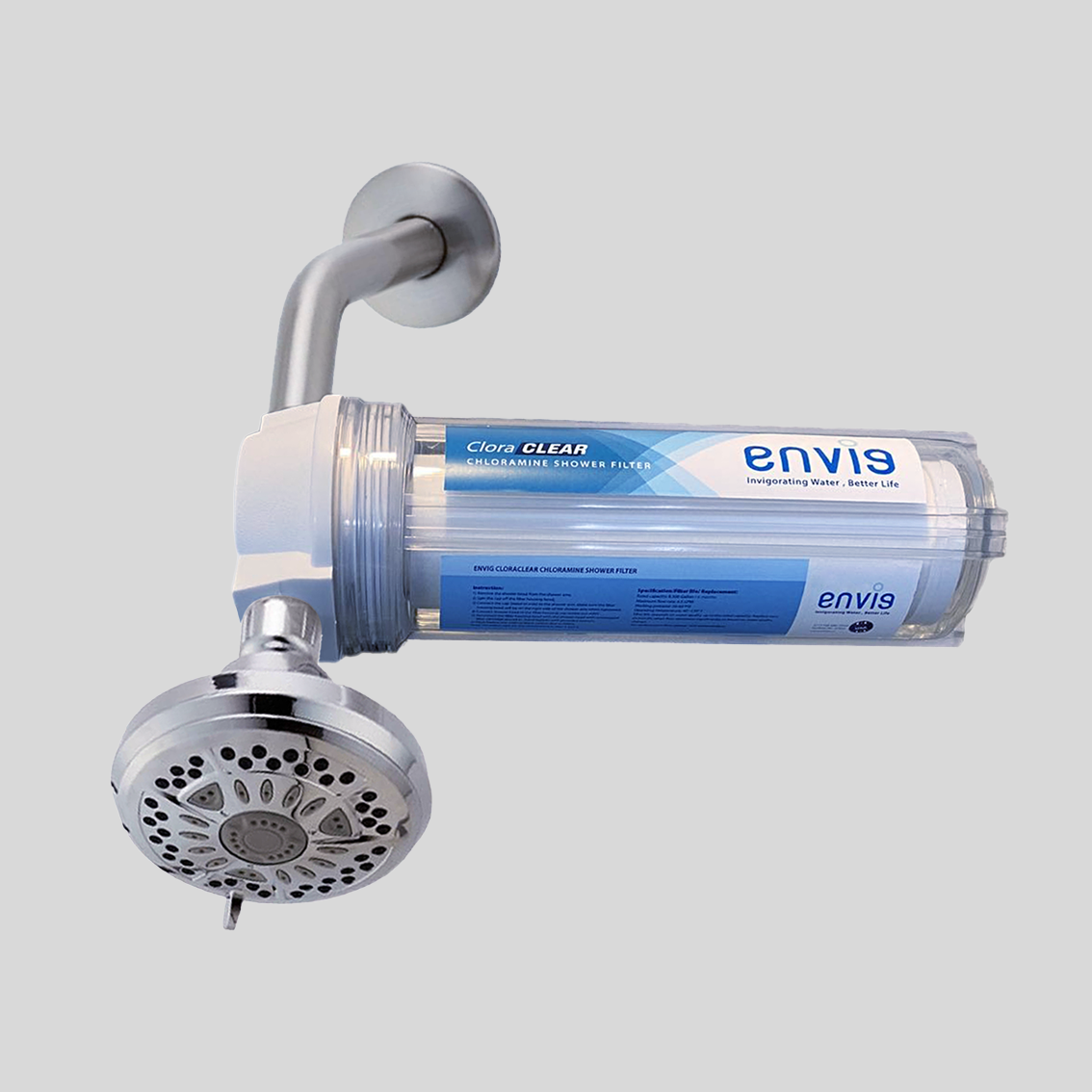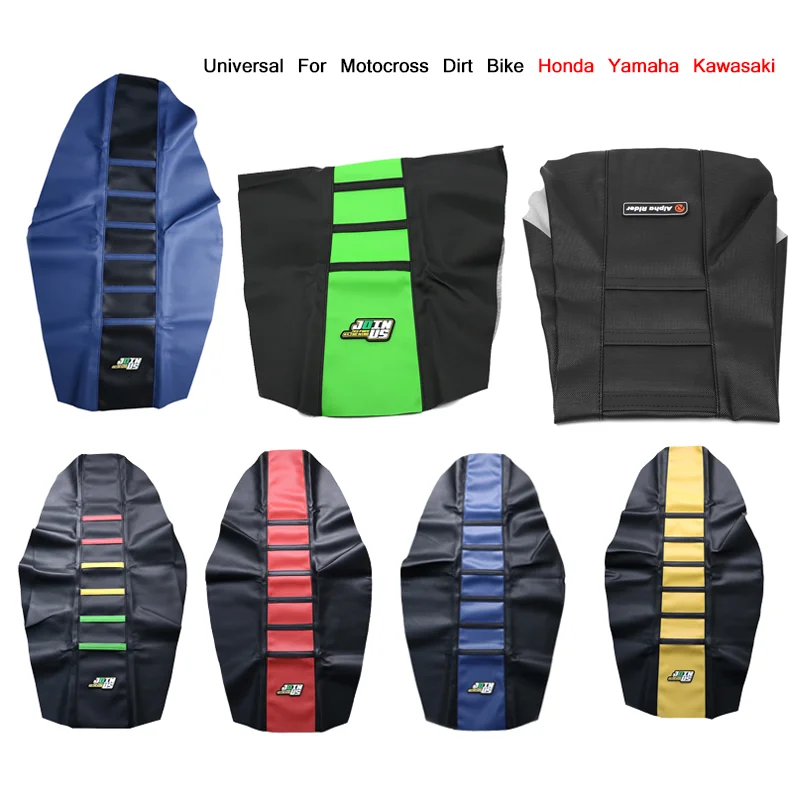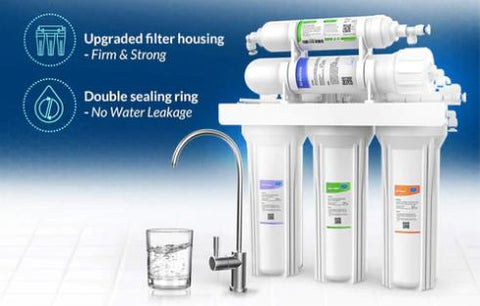Why Chlorine in Your Tap Water Matters More Than You Think
That sharp, almost bleachy aroma when you pour a glass of tap water could be more than a mere morning annoyance. Municipal water systems add chlorine to neutralize harmful bacteria and viruses, a public health safeguard that’s undoubtedly saved countless lives. Yet, the same disinfectant leaves behind a chemical taste and odor that’s impossible to ignore [1]. Over time, chlorine reacts with naturally occurring organic matter to form by-products that cling to your glass, altering the flavor of your coffee and fogging up ice cubes in ways you wouldn’t expect.
Beyond the olfactory irritant, chlorine can be harsh on sensitive skin and delicate hair shafts. I still remember the time I washed dishes after a long day—my hands felt unusually tight and itchy, a small but telling frustration that hinted at the underlying issue [2]. Dermatologists note that repeated exposure can exacerbate eczema or leave skin feeling dry and flaky. Some respiratory specialists even warn that inhaling chlorine by-products during hot showers could irritate airways over time [3].
Fortunately, stripping chlorine out of your home’s water supply is surprisingly straightforward. Simple activated carbon filters can adsorb up to 99.9% of chlorine molecules, transforming that harsh bite into a neutral, refreshing taste. For whole-home protection, installing a whole-house water purification system ensures every tap—from showerhead to kitchen sink—delivers clear, chlorine-free water. If you prefer a more compact solution, a point-of-entry chlorine removal filter keeps your plumbing shielded without upheaval. It’s reassuring to know that a small change can bring immediate relief to your family’s daily routine.
The Science Behind Chlorine Filters: How Activated Carbon Works Its Magic
Ever paused to wonder why your tap water suddenly tastes crisp and free of that pool-like scent after you install a filter? The secret often lies in activated carbon. Picture a black sponge so fine that a single teaspoon holds the surface area of a football field. As chlorinated water flows through granular or block carbon, chlorine molecules are irresistibly drawn into millions of microscopic pores—a process known as adsorption—where they cling and transform into harmless compounds [1].
Adsorption isn’t just a physical trap; it’s a molecular handshake. Chlorine atoms bond to the carbon’s surface, effectively stripping out tastes and odors without introducing new chemicals. Granular activated carbon (GAC) filters—common in many home filtration setups—excel at this, reducing chlorine levels by nearly 100% and leaving water with a neutral fragrance [2].

Experts at Culligan emphasize that carbon block filters hold up even under variable home water pressures. According to one engineer, “It’s like giving water a molecular makeover—chlorine smells vanish, and freshness stays” [3]. Whether you’re brewing espresso or filling a baby’s bottle, the transformation is instantly noticeable. In fact, families often report smoother skin after showering and richer coffee aromas, turning everyday hydration into something to look forward to.
Picking Your Champion: Comparing Carbon, KDF, and Catalytic Filter Media
Imagine each sip of water as a breath of fresh, chlorine-free air rushing through your day. But with so many filter media on the market, how do you choose? Three heavy hitters—activated carbon, KDF, and catalytic media—each bring unique strengths.
| Filter Media | Mechanism | Targets | Ideal Use |
|---|---|---|---|
| Activated Carbon | Adsorption | Chlorine, odors, organic compounds | Point-of-use, coffee, drinking water |
| KDF (Kinetic Degradation Fluxion) | Redox reactions | Chlorine to chloride, heavy metals, bacteria | Whole-home, shower filters |
| Catalytic Media | Enhanced adsorption & chemical breakdown | Chlorine, chloramine | High-flow entry points, chloramine-heavy areas |
Activated carbon remains the classic choice, trapping up to 99.9% of chlorine and its by-products with impressive efficiency [1][2]. If your water supply contains heavy metals or you want to inhibit bacterial growth, KDF media uses a clever redox dance to neutralize contaminants and discourage microbial colonies [4]. And for stubborn chloramine—often found in cities using combined chlorine-ammonia disinfectants—a catalytic media stage breaks down molecules faster than conventional carbon ever could [3]. Each media shines in its domain, so weigh your specific water profile before crowning a champion.
From Countertop to Under-Sink: Finding the Perfect Filter for Your Home
A shining glass of pure water starts with picking the right filter setup for your kitchen—countertop convenience or under-sink stealth, each has its perks. If you rent or want instant results, countertop filters deliver crisp water without tools or professional installation.
Activated carbon cartridges, whether granulated or block, excel at removing chlorine, sediment, and many organic chemicals, yielding water that tastes clean, never pool-like [2].
For those who love a quick, no-fuss solution, a countertop water filter clamps directly to your faucet and starts working immediately. You’ll watch chlorine vanish before your eyes as water passes through the cartridge—an empowering upgrade that feels like magic on day one [1].

Craving a stealthy look and higher flow rates? An under-sink kitchen filter tucks away under your cabinet. These systems often combine carbon, ceramic shells, or even a mini-reverse osmosis stage to strip out chlorine, heavy metals, and fine particles [4]. You won’t see it, but you’ll taste the difference every time you pour a glass.
Ultimately, your choice hinges on test results, counter space, and maintenance willingness. Match your filter to your routine, and everyday hydration feels like a small celebration.
Set It And Forget It? A Friendly Guide To Stress-Free Filter Installation
First things first: always shut off the cold-water valve under the sink or at the main line, then open the nearest faucet to relieve pressure. Gather basics—a bucket, adjustable wrench, Teflon tape, gloves—and keep your filter’s instructions close at hand. A little prep goes a long way toward leak-free success.
Most activated carbon cartridges—whether countertop or under-sink—install with a simple twist-and-click. Remove the old cartridge, wrap the threads with Teflon tape, then screw in the fresh filter until snug. These filters can remove up to 99.9% of chlorine and odor compounds and typically need changing every 6–12 months [2].
Feeling adventurous? Reverse osmosis kits often come color-coded with quick-connect fittings. Mount the bracket, snap in pre-filters and RO membrane, then hook up the drain and spigot lines. Flush the new membrane for about 30 minutes, and voilà—crisp, chlorine-free water on demand. “I couldn’t believe I installed my RO kit in under an hour,” raves Jane D. [3].
If you’re tackling a whole-house setup, dedicate a weekend afternoon. Cut into the main line, slip on a bypass valve, attach the filtration tank, then flip the bypass to test. Many homeowners report stress-free installs with basic plumbing knowledge. And for zero-tool ease, don’t forget gravity filter jugs—just fill, wait, and pour [1].
Maximizing Lifespan: Smart Maintenance Hacks for Crystal-Clear Water
Never wait until your water tastes off—start by marking your calendar for filter changes and flushes. Research shows a clogged carbon block can lose over half its chlorine-removal power after six months of use [1]. By replacing activated carbon every 4–6 months and checking sediment pre-filters monthly, you’ll maintain peak flow rates and minimal odors, no matter the season.
Backwashing is another trick: reverse the flow to flush out trapped debris and bacteria. Soak carbon blocks in clean water for ten minutes to revive adsorption, then scrub O-rings with a soft brush to prevent leaks. “After I flushed my under-sink filter every six weeks, my water tasted like day one,” says homeowner Emma [5].
Don’t forget to monitor total dissolved solids (TDS) with a pocket meter—once levels creep up, time for fresh membranes or a new carbon block. Culligan reports that timely media swaps restore 99% chlorine removal [3]. For a deeper dive on micron ratings, check our 5 vs. 20 micron filter guide.
When Things Go Wrong: Troubleshooting Common Filter Frustrations
Clogged filters are the #1 culprit when water dribbles instead of gushes. Over time, sediment and mineral buildup can choke flow rates from 2–3 gallons per minute down to a mere trickle. A quick flush or cartridge swap often restores full pressure: shut off the inlet, relieve pressure, remove the element, and run clean water through the housing for 30 seconds before reinserting a fresh filter [5].
When your water still tastes “off,” saturated carbon could be the issue. I once let a block filter run past eight months—suddenly, every sip carried a musty aftertaste. Swapping in a new cartridge instantly delivered that crisp, spring-fresh flavor [1].

Leaks or drips often point to a misaligned O-ring or loose cap. Hand-tighten housings until snug and inspect seals for debris. For complex setups—like reverse osmosis—follow manufacturer torque specs and check connections monthly. A quick seal check can save gallons of wasted water and tons of frustration [3].
Sip with Confidence: Health Benefits of Chlorine-Free Water
Imagine each refreshing sip washing away harsh chemical tastes, leaving you with water so clean it feels like a gentle hug. Removing up to 99.9% of chlorine and its by-products reveals a crisp, sweet flavor impossible to ignore [1][2].
Chlorine can strip natural oils from your skin, leaving it tight or red—especially for those with sensitivities. I was amazed when my hands felt softer after just days of showering with filtered water, and many users report relief from dryness and irritation [5]. Even simple under-sink or countertop options can transform bath time into a soothing ritual.
Drinking chlorine-free water also promotes digestive comfort by avoiding residual by-products that irritate the gut lining. For near-total removal, reverse osmosis combines carbon pre- and post-filters to capture chloramine and trace contaminants alike [3]. Reach for chlorine-free hydration, and your body will thank you.
Going Green: Sustainable Practices in Modern Water Filtration
Manufacturers are embracing renewable, biodegradable filter media—like coconut-shell activated carbon that captures chlorine and organic compounds without harsh chemicals—cutting plastic waste by up to 60% per household annually [1]. Many carbon blocks can even be returned for safe composting, keeping landfills leaner and greener.
New low-energy reverse osmosis membranes operate at pressures 30% lower than their predecessors, slashing electricity use in half [3]. Salt-free scale control systems, such as template-assisted crystallization units, neutralize hardness ions without water waste—an eco-friendly leap from traditional softeners [5].
Gravity filter jugs also deserve praise: blend catalytic KDF media with carbon for chemical-free chlorine removal and extended filter life. Families refill stainless-steel pitchers over 100 times annually, cutting single-use plastics and nurturing healthier ecosystems.
Key Takeaways & Final Words
Activated carbon filters—whether granular or block—adsorb up to 99.9% of chlorine molecules, transforming your water into pure, refreshing hydration with zero chemical aftertaste [1][2]. Reverse osmosis systems add a membrane stage for near-total contaminant removal, while KDF and catalytic media handle heavy metals and stubborn chloramine. Choose the right technology for your water profile, install with confidence, and keep up with simple maintenance to enjoy crisp, chlorine-free water every day.
Your daily sip is more than hydration—it’s a ritual of well-being. Embrace chlorine-free water, and you’ll taste the difference, feel the comfort, and celebrate each glass as a small win for your health and the planet.
Citations
“`html
Complete Top Picks Comparison – 20 Products
| Product | Source | Price | Rating | Image | Buy |
|---|---|---|---|---|---|
| Express Water Whole House Water Filter System | Ultimate Protection | 3 Stage Water Purifier Whole Home, Heavy Metal + Anti-Scale Filters, High Reduction in Scale, Chlorine, PFAs, Lead, Arsenic & more | Amazon | $599.99 | ★★★★☆ |  | Buy on Amazon |
| iSpring Whole House Water Filter System, Reduces Iron, Manganese, Chlorine, Sediment, Taste, and Odor, 3-Stage Iron Filter Whole House, Model: WGB32BM | Amazon | $473.68 | ★★★★☆ |  | Buy on Amazon |
| Waterdrop 10UA PRO Under Sink Water Filter, No Drill Required, Time Reminder, Easy Installation, Reduces Lead, Chlorine, Bad Taste & Odor, NSF/ANSI 42 Certified, 11000 Gallons, Does not Lower TDS | Amazon | $56.99 | ★★★★☆ |  | Buy on Amazon |
| WaterBoss Whole House Water Filter – Whole Home Water Filtration System for Well & City Water – Filters 96.9% of Chlorine Taste & Odor – 6yr, 600,000 Gl, WB-WH-Filter | Amazon | $299.99 | ★★★★☆ |  | Buy on Amazon |
| Whole House 3-Stage Water Filtration System, 3/4″ port with 2 valves and extra 1 year filter supply (2 sets, 6 pcs) | Amazon | $167.00 | ★★★★☆ |  | Buy on Amazon |
| Purewell 2.25G Gravity Water Filter System with Water Level Window, 8-Stage 0.01μm Ultra-Filtration Stainless Steel Countertop System with 4 Filters and Stand, Reduce Fluoride and Chlorine, PW-KS-CF | Amazon | $229.00 | ★★★★☆ |  | Buy on Amazon |
| Aquatabs 397mg Water Purification Tablets (100 Pack). Water Filtration System for, Camping, Boating, Emergencies, Survival, RVs, and Marine-Use. Easy to Use Treatment and Disinfection. | Amazon | $36.29 | ★★★★★ |  | Buy on Amazon |
| Waterdrop Gravity-fed Water Filter System, Reduces Lead and up to 99% of Chlorine, NSF/ANSI 42&372 Standard, with 2 Black Carbon Filters and Metal Spigot, King Tank Series, WD-TK-A | Amazon | $138.99 | ★★★★☆ |  | Buy on Amazon |
| Under Sink Water Filter for Sink Faucet by CuZn, 5 Year Filtration Life, Reduces PFAs, PFOS, Lead, Chlorine, Improves Taste of Tap Water with NSF/ANSI 42 & 372 Certified High Performance | Amazon | $150.05 | ★★★★☆ |  | Buy on Amazon |
| 2 Faucet Water Filter for Sink, Rapid Flow – 400 Gallons Faucet Mount Water Filtration System for Tap Water, NSF Certified Reduces Chlorine & Bad Taste with 4 Replacement, T1 | Amazon | $0.00 | ★★★★☆ |  | Buy on Amazon |
| Mini Pit Dirt Children Bike Seat Cushion 47cc 49CC Motorcycle Saddle Protection Pad Cover Foam for Apollo Kids Pocket Moto Parts | AliExpress | $12.59 | ☆☆☆☆☆ |  | Buy on AliExpress |
| Fewfuss Dirt Bike Seat Cover for Surron Sur Ron Ultra Bee Non-slip Waterproof E-bike Seat Cushion | AliExpress | $14.86 | ★★★★★ |  | Buy on AliExpress |
| Hot Sale Super Power off Road Racing Motorcycle 3000w 5000w Dirt Bike Electric Bike Other Motorcycles | AliExpress | $5829.04 | ☆☆☆☆☆ |  | Buy on AliExpress |
| E-bike Seat Cover Waterproof Non-slip Saddle Cushion Guard For Ultra Bee Ultrabee Electric Dirt Bike Motorcycle Accessories | AliExpress | $17.05 | ★★★★★ |  | Buy on AliExpress |
| Motorcycle Seat Flat Tall Saddle Seats For Honda XR50 CRF50 50cc Comfort Cushion Saddles Motocross Accessories Dirt Pit Bike | AliExpress | $26.24 | ☆☆☆☆☆ |  | Buy on AliExpress |
| Goten Seat For 47cc 49cc Mini Dirt Bike | AliExpress | $12.82 | ☆☆☆☆☆ |  | Buy on AliExpress |
| 2025 Factory Supply 79 bike pro 8500W 74V 90KM/H Off-road Motorcycle E-Dirt Bike Electric Motorcycle for sale | AliExpress | $5262.89 | ☆☆☆☆☆ |  | Buy on AliExpress |
| Seat Cushion Thicken Seat for Talaria – Stylish Seat for Talaria Sting MX3 MX4 Electric Dirt Bike Black | AliExpress | $30.01 | ★★★★☆ |  | Buy on AliExpress |
| Electric Motorcycle Seat For Sur -Ron About Surron Light Bee S X Enduro Dirt Bike Fram Motocross | AliExpress | $12.71 | ★★★★☆ |  | Buy on AliExpress |
| Universal Ribbed Gripper Soft Seat Cover For KAWASAKI SX SXF XC XC-W XC-F YZF EXC-F 125 250 350 450 501 701 Dirt Bike Off Road | AliExpress | $13.16 | ★★★★★ |  | Buy on AliExpress |
“`

